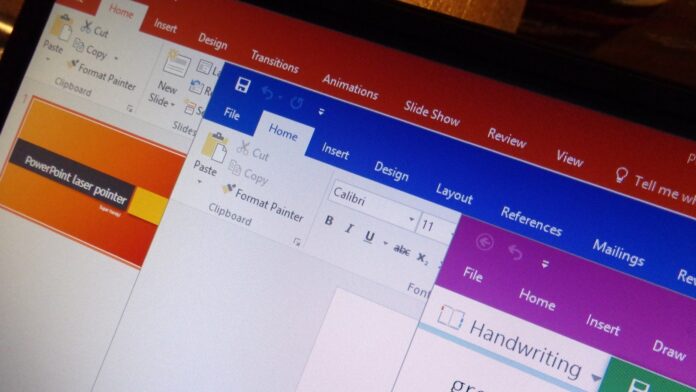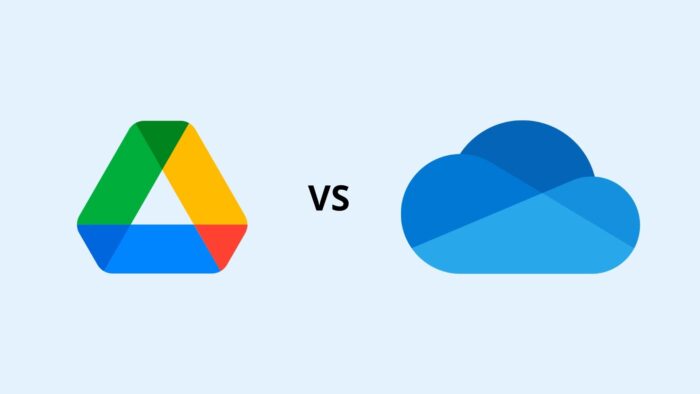
The reliance on cloud platforms in the modern business world has seen tech giants Microsoft, Google and Amazon rise in prominence. Whilst AWS is a powerful tool for retailers selling goods directly on the Amazon platform, other types of businesses typically choose between Google Workspace or Microsoft 365.
Both cloud platforms are office productivity suites bursting with tools and features that enable enterprises to orchestrate operations around their daily business activities and the working preferences of employees.

Microsoft 365 and Google Workspace are available on a monthly or annual subscription and give users access to a raft of productivity and management tools including a word processor, spreadsheets, presentations, email, calendar, videoconferencing, messaging, and note-taking software.
Historically, Microsoft 365 was recognised as the most dominant productivity suite. It is still the leader of the pack and sets the benchmarks for competitors.
However, Google Workspace is picking up the pace and clawing in customers that have become disillusioned with Microsoft – probably due to the company’s notoriously poor customer service.
Cost

If cost is your priority, M365 is hard to beat. Starting at just $6 a month per user, the basic package gives you 1TB of cloud storage, OneDrive, 300-participant video conferencing, and web and mobile versions of Outlook, Word, Excel, and PowerPoint, as well as Microsoft Teams, Exchange, and Sharepoint.
Google Workspace is also $6 per month per user but you only get 30GB of cloud storage together with Google’s suite of business productivity apps. And they are only equal to Microsoft so there is no specific gain in relation to tools.
However, start-ups may want to consider Google Workspace initially because they enable you to pay month-by-month and cancel the contract without any financial loss. Microsoft ties you into an annual commitment – so if you end the contract early you still have to pay for services you’re not using.
Moreover, Microsoft doesn’t offer full access to its productivity suite in its entirety on the basic package. To get the desktop version of its software, users have to subscribe to Microsoft Business Standard, Apps for Business, or Premium plan. And that significantly bumps up the cost.
Word Processing Power and Spreadsheets

There’s not a great deal that separates word documents and spreadsheets in either M365 or Google Workspace. They have practically the same functionality and even look the same.
The key difference arises in the scope users have to create a variety of content. For example, both processing suites enable you to create reports, presentations, brochures, resumes, customisable spreadsheets and more. But M365 has over 300 pre-built templates compared to Google’s 55.
Microsoft, therefore, gives you more options to diversify and improve the content you create. But as mentioned above, users have to purchase the next tier subscription to be able to access M365 document creation tools. Google’s Workspace apps are available to the user on the lowest tier.
Both platforms require you to be connected to wi-fi in order to transfer or save documents to the cloud. However, both suites enable you to work offline. The content is stored locally but is not accessible to other parties until you go online and save the document to the cloud.
Remote Collaboration
Both Microsoft 365 and Google Workspace are geared towards remote working and hybrid office models. Users can work from anywhere but have the tools to collaborate seamlessly with team members, colleagues or freelancers.
Multiple users can work on the documents at the same time in remote locations. Or you can work in the docs separately. Edits and comments are highlighted and include the user’s name. The author that created the document has the option to accept or dismiss changes.
The key difference comes in the sharing of the documents. M365 is an established format throughout the business world. Anyone can share a docx. File in the knowledge the recipients will be able to open it, anywhere and at any time.
With Google, recipients can only access the content if they are given access and they are online.
Cybersecurity

Microsoft and Google spend billions of pounds each year to improve their cybersecurity defence tools. Both companies’ cloud services include data encryption, security protection, system configuration and application settings, data loss prevention, MFA or TFA, built-in spam and malware detection and enhanced support.
Both Google Workspace and M365 boast impressive security features. There’s probably little to choose between the two companies and, unless you’re an expert in cybersecurity, would struggle to determine which of the two companies will provide the most network protection.
As a matter of fact, the only way to determine that is to assess the number of times both companies have been hacked. And Google wins that hands down because Microsoft is hacked multiple times a year.
Customer Support

Considering Google and Microsoft essentially monopolize the business market, by all accounts, the lack of customer support offered by the companies is woeful. The comments left on TrustPilot highlight the type of companies customers have to deal with.
Google comes out on top – but even then they only sport a measly 2.6 stars from five. Google customers describe the company’s customer support as “borderline fraudulent” and the “worst customer service”.
One user writes: “Google was automatically blocking all our customer form submissions that were supposed to come into our inbox for FIVE MONTHS without us knowing.”
This doesn’t sound encouraging to anybody thinking about using Google Workspace.
Yes, Microsoft is even worse. The company’s TrustPilot rating is a lowly 1.2 out of five. Their customers write “Microsoft “support” is a joke” and “Absolute Garbage”.
One customer writes: “This is one of the worst experiences I have ever had with a company period. With no help and giving false and misinformation, from multiple support staff.”
Wrap Up
All in all, there’s not really much to choose between Google Workspace and Microsoft 365 in terms of functionality, tools and cybersecurity. Google gives you more bang for your book – but don’t expect any change from either of these powerhouses when you need help from customer support.

















